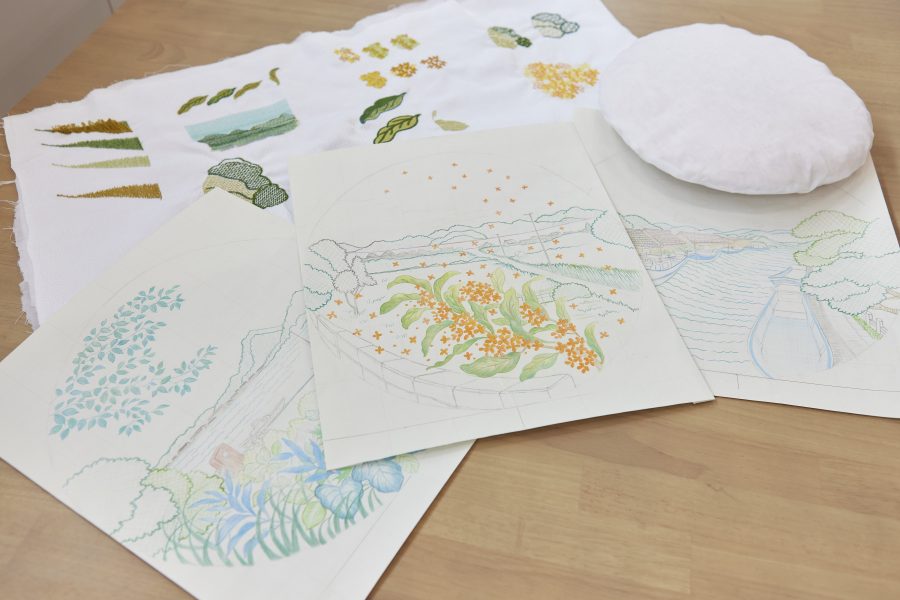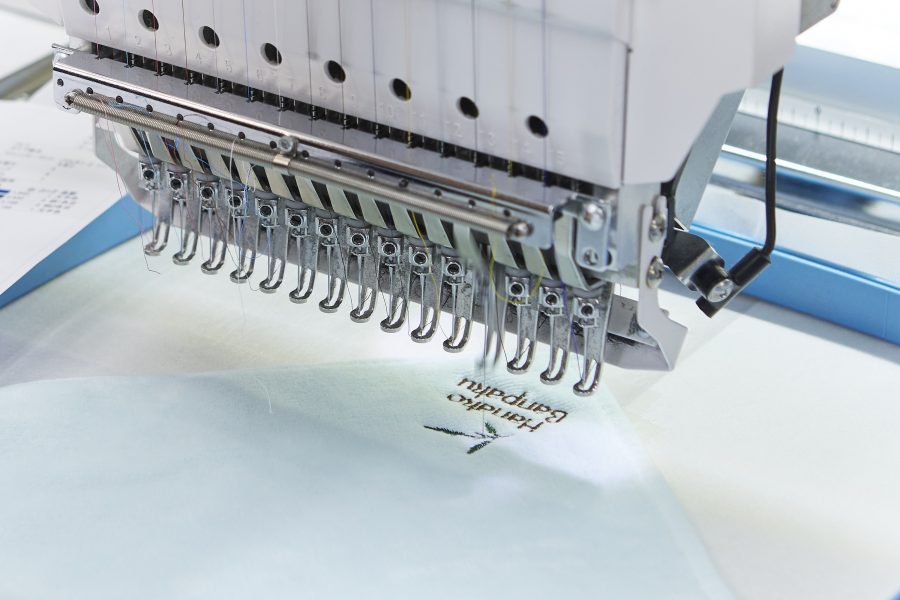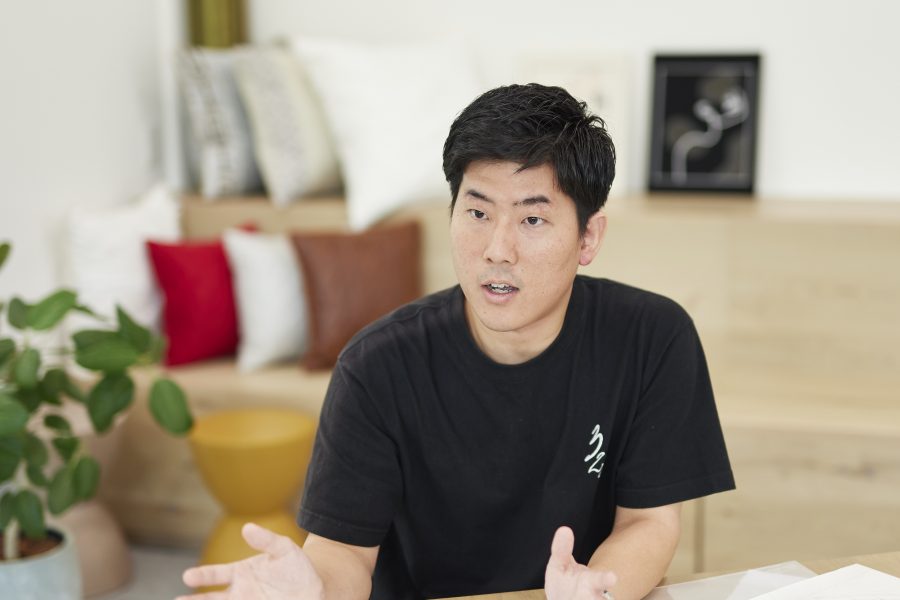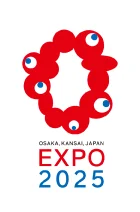
“A stool which the maker and a user co-create and has lasting memories,” which is infused with the hope of “circulating resources” and “having people continue to use it with affection,” will be unveiled at the Expo 2025 Osaka, Kansai, Japan. Two companies in Kyoto Prefecture, a furniture manufacturer and an embroidery company, will use disaster waste from the 2024 Noto Peninsula Earthquake and embroider on leftover “Tango Chirimen” fabric to preserve priceless memories. Let’s take a closer look at their endeavor.
The Design Week Kyoto Executive Committee, a general incorporated association in Kyoto City, is made up of diverse craftspeople rooted in the various regions of Kyoto Prefecture. When the Representative Director Isao Kitabayashi encouraged members to participate in the Co-Design Challenge in the fall of 2023, Masato Yamashita of Maizuru City’s embroidery company Mitsuba, Ltd. stepped forward. Tetsuo Takasugi, President of Mizokawa Co., Ltd., a furniture manufacturer in Kyotango City, also agreed, believing that “interaction with different industries will be beneficial.”
After the stool was selected for the Co-Design Challenge, Kitabayashi, Yamashita, Takasugi, and the project designers held several meetings to refine the concept. About a year ago, Yamashita came across a faulty fabric type known as “B-grade” in a warehouse at a weaving factory in Yosano Town, Kyoto Prefecture, a region known for producing textiles, and decided to revive the fabric through embroidery. He wondered if this could help the Tango Chirimen industry, which is in decline due to a drop in demand for Japanese clothing. He then proposed the use of the leftover Tango Chirimen fabric for stools’ cushion fabric, which was accepted. The idea was to fill the center of the cushion with the wood curls produced by Mizokawa’s furniture manufacturing, which would be in charge of the stool’s seat and leg woodworking.
The concept was to embroider someone’s precious memories onto the cushion fabric, and they decided to use the memories of Yamashita, the creator of the cushion, as the template for the pattern. “The ‘Yoshihara Irie Inlet,’ a canal in Maizuru City, and the surroundings of my parents’ home with its strikingly beautiful osmanthus blossoms, were the first things that sprung to my mind. We are currently debating and discussing designs that will highlight the embroidery’s quality because it is challenging to realistically embroider such memorable scenes while taking into account the fine unevenness, known as ‘shibo,’ on the surface of the Tango Chirimen fabric,” said Yamashita. The designs will be updated with the users’ sentiments in mind. Yamashita, the initiator of the project, was born in Maizuru City in 1991. After studying architecture at a university in Kyoto City, he worked for a house builder before joining the family business in 2020. Yamashita worries, “In addition to the aging population and a lack of workers, the low processing fees of the embroidery industry within the supply chain are issues for the survival of the industry,” but he also mentions, “That’s why we have made ‘updating embroidery culture’ our motto, and want to improve the value of embroidery in a modern way, not just in apparel, but also in interior design. The Co-Design Challenge is a golden opportunity for us to showcase our work at the Expo, which will be visited by people from Japan and abroad.” The stools are imbued with love for the hometown, along with pride in craftsmanship.


Share this article


